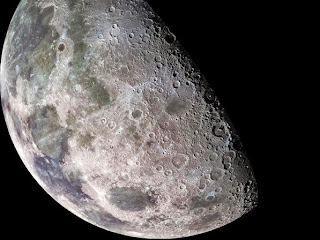The matter that makes up distant planets and even-more-distant
stars exists under extreme pressure and temperature conditions. This matter includes members of a family of seven elements called the noble gases, some of which–such as helium and neon–are household names.
Alexander Goncharov, Stewart McWilliams, and the rest of the team’s work on noble gases could help solve the mystery of why
Saturn emits more heat from its interior than would be expected. In Jupiter and Saturn, helium would be insulating near the surface and turn metal-like at depths close to both planet’s cores, where it is also predicted to be dissolved in
hydrogen.
But neon behaved differently in the laboratory conditions mimicking the two gas giants. In Saturn, it would remain an insulator even at the core. As such, an ocean-like envelope of undissolved neon could collect deep within the planet and prevent the erosion of Saturn’s core compared to its neighbor, Jupiter.
New work from a team of scientists led by Carnegie’s Alexander Goncharov used laboratory techniques to mimic stellar and planetary
conditions, and observe how noble gases behave under these conditions, in order to better understand the atmospheric and internal chemistry of these celestial objects. Their work is published the week of June 15 by Proceedings of the National Academy of Sciences.
The team used a diamond-anvil cell to bring the noble gases helium, neon, argon, and xenon to more than 100,000 times the pressure of Earth’s
atmosphere (15-52 gigapascals), and used a laser to heat them to temperatures ranging up to 50,000 degrees Fahrenheit (about 28,000 degrees Kelvin).
More http://bit.ly/1dJWYL6
'via Blog this'














































